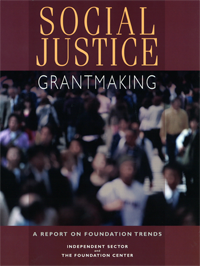Advocacy and Public Policy

Independent Sector and the Foundation Center have partnered in developing this research, resulting in a quantitative study of social justice funding by 1,000 of the largest private and community foundations in the U.S.
Read More...2007, 56 pages. Urban Institute, 2100 M Street NW, Washington, D.C., 20037, 202-833-7200, www.urban.org
Read More...2008, 33 pages. The Atlantic Philanthropies, 125 Park Avenue, 21st Floor, New York, NY, 10017, 212-916-7305, www.atlanticphilanthropies.org
http://www.atlanticphilanthropies.org/content/download/
6739/103341/file/ATLP_farmworkers_report.pdf
2008, 237 pages. Wiley, 10475 Crosspoint Boulevard, Indianapolis, IN, 46256, 877-762-2974, http://www.wiley.com
Read More...2008, 51 pages. SRI International, 333 Ravenswood Avenue, Menlo Park, CA, 94025, 650-859-2000, www.sri.com
http://policyweb.sri.com/cep/publications/AnUnfinishedCanvasDistrictCapacityAndNewFunds.pdf
Read More...Dr. Martin Luther King Jr. Strength to Love, 1963
Introduction
Read More...